The 10 Best At-Home Laser Hair Removal Devices Rival a Professional Treatment
Bonus: they work quickly and are safe to use.
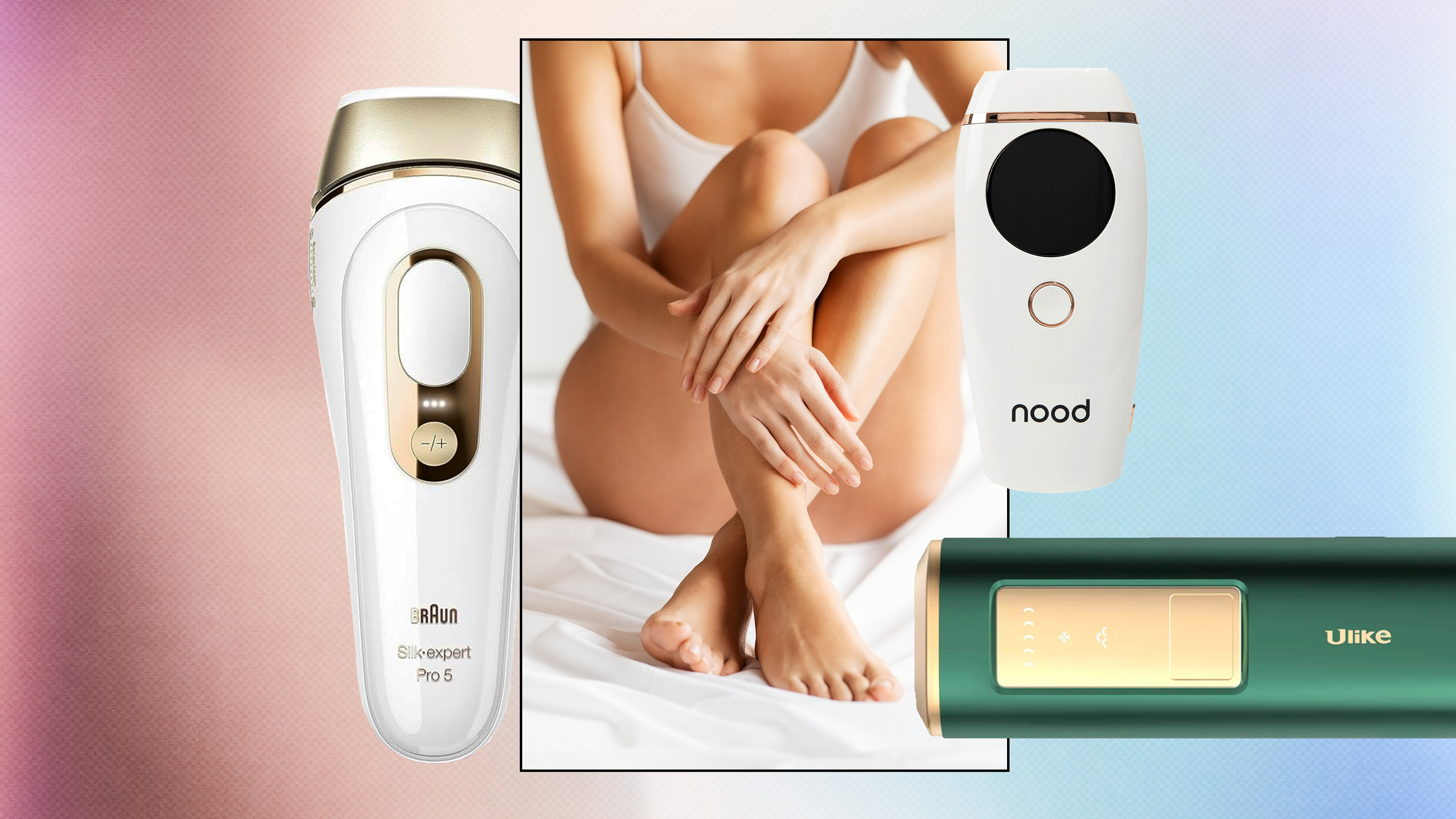
- Best At-Home Laser Devices at a Glance
- The Best At-Home Laser Hair Removal Devices
- How I Chose the Best At-Home Laser Hair Removal Devices
- What to Look For in an At-Home Laser Hair Removal Device
- Does Laser Hair Removal Work?
- Is At-Home Laser Hair Removal Safe for All Skin Tones?
- How It Works
- What Are The Different Types of Lasers Used?
- How Long Does Laser Hair Removal Last?
- How To Prepare
- Aftercare Tips

After experiencing the many pitfalls of shaving (ingrown hairs, redness, irritation, and speedy re-growth), I'm contemplating alternative hair removal methods. I've used the best razors, waxing kits, devices to remove facial hair, and epilators, but I'm determined to find a long-term solution to my stubble. That's where the best at-home laser hair removal devices come in.
Unlike a professional treatment that can cost well over $600 a session, high-grade at-home tools are a fraction of the price—and offer similar results. They're less painful, and while it may take a little longer to achieve the results I'm after, dermatologists agree that at-home tools can be effective for some people.
Ahead, I chatted with several top dermatologists to get their recommendations for the best, safest, at-home laser hair removal devices. Keep scrolling to find their expert advice, safety tips, a breakdown of the types of lasers on this list, and more. Smooth skin awaits.
Best At-Home Laser Devices at a Glance
- Shop The Best At-Home Laser Hair Removal Devices
- How I Chose The Best Laser Hair Removal Devices
- Does At-Home Laser Hair Removal Work?
- Is At-Home Laser Hair Removal Safe?
- Is At-Home Laser Hair Removal Safe for All Skin Tones?
- How Does Laser Hair Removal Work?
- Common Types of Lasers Used
- How Long Does Laser Hair Removal Last?
- How to Prepare
- Aftercare
- Meet The Experts
Marie Claire's Favorite At-Home Laser Hair Removal Devices
- Best At-Home Hair Removal Device Overall: Braun Silk-Expert Pro 5 IPL Hair Removal System
- Best At-Home Hair Removal Device for Hard-to-Reach Areas: Silk'n 7 Hair Removal Device
- Best At-Home Hair Removal Device for the Bikini Line: Nood The Flasher 2.0
- Best Cooling At-Home Hair Removal Device: Ulike Sapphire Air+ IPL Hair Removal Device
- Best Affordable At-Home Hair Removal Device: Mismon Hair Removal Device
- Best At-Home Laser Hair Removal Device For Beginners: Braun Skin i·expert Smart IPL
Shop The Best At-Home Laser Hair Removal Devices

This Braun device promises smooth results in as little as four weeks. It is fast enough to treat both legs in five minutes. It has three sensitivity modes, so it's as close to painless as possible. It uses up to 125 flashes per minute and is clinically tested to be safe and effective. This device is unsuitable for deep skin tones or fair hair colors, like light blonde, red, and gray.
FDA-Cleared: Yes
Laser Type: IPL
Number of Flashes: 400,000
What We Love: Top-rated; has a max of 400,000 flashes; comes with three different heads
What We Don't: Not suitable for deep skin tones; not suitable for light blonde, red, or gray hair
Customer Review: "I got this around two months ago as a gift and have been using it every week and even though I have about four sessions left until I can see full results, I basically have no hair left on my body! The only thing is that the heads are impossible to clean and I would love to buy new heads for them, haven't done much looking around but hopefully, that's possible" — Braun

Silk’n’s newest device, the Silk’n 7, is the fastest-working device in the brand’s lineup. Available in two colors, it has a 360-degree rotating head that lets you reach every hair (even those annoying little stragglers). It has three removable heads designed for use on a different part of the body, so you can safely use it on both your face and in your intimate areas. Its AutoAdapt feature allows it to work on a broader range of skin tones because it automatically senses your skin tone and delivers a suitable energy level. The brand says you’ll see 92 percent hair reduction within 12 sessions, completed two weeks apart.
FDA-Cleared: Yes
Laser Type: IPL
Number of Flashes: 600,000
What We Love: Has a rotatable head; comes with three attachments; can be used on the face; can be used on the body.
What We Don't: Not suitable for deep skin tones.
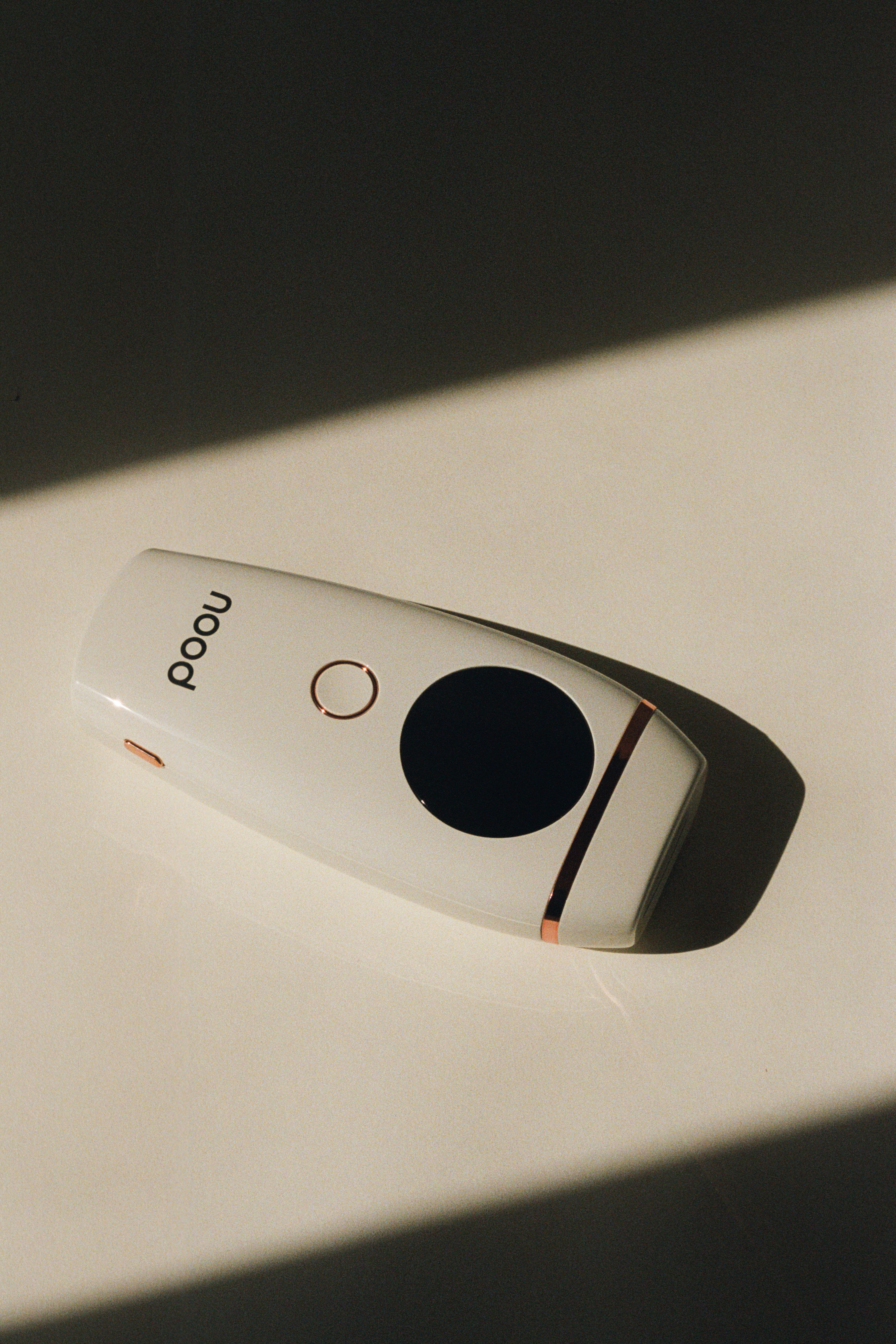
This is the best laser hair removal device if you’re targeting the bikini line. Let's be honest: we're sensitive down there, so a less painful wavelength of light is very much appreciated. Reviewers note that it is easy to use, but it takes a while because you must go over each area three times for best results. They also note that coarser hair—like on the face—takes around eight weeks to go away.
FDA-Cleared: Yes
Laser Type: IPL
What We Love: 600,000 flashes; fast-acting; top-rated; less painful; good for the bikini line; can be used on the face
What We Don't: Not suitable for deep or dark skin tones; not suitable for white or light blonde hair
Customer Review: “I have used this as directed (go over the area three times, twice a week for 8 weeks) and while the hair is not 100% gone, it’s about 90% gone and the hair that remains is much finer and grows much slower. I no longer have to shave every day! I will keep using this in these areas for a few more weeks and I’ve also started doing other areas. I would buy this again.” — Amazon
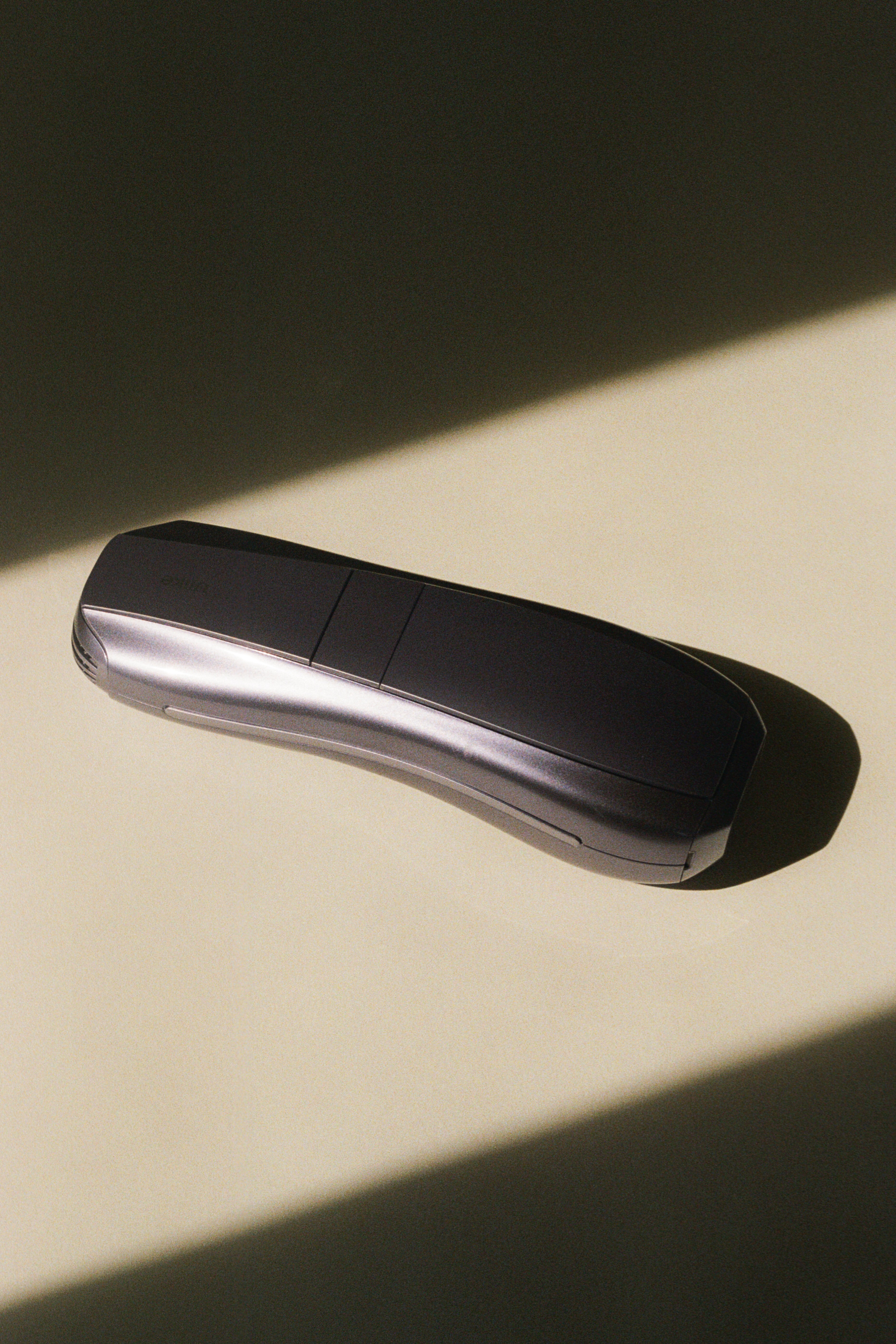
If you want to avoid the spicy pinch of a laser hair removal device, this FDA-cleared IPL laser from Ulike is for you. It uses sapphire lamp heads and a Quadro cooling system to reduce the sapphire temperature to 65 degrees Fahrenheit. It promises results in as little as four weeks, has five energy levels, and comes with everything you need for a hair removal treatment, including safety glasses and a razor. It has five treatment modes: Fast Mode for touch-ups; Normal Mode for fine to normal hair; Auto-Glide Mode to glide over the skin and treat larger surface areas; High Mode for course, thick hair; and Manual Mode for targeted removal. It’s suitable for use on the face, bikini line, arms, armpits, and legs. The Ulike is unsuitable for dark and deep skin tones or red or gray hair.
FDA-Cleared: Yes
Laser Type: IPL
Number of Flashes: 1,000,000
What We Love: Has five energy levels; has five modes; has cooling technology; comes with safety glasses
What We Don't: Not suitable for very dark and deep skin tones; not suitable for gray and red hair colors
Customer Review: “I followed instructions completely and was starting to see results by week three! It’s amazing and the only thing that has ever worked for me! I have dark, thick hair, and only a small amount grows back now! I used to shave every other day. It’s now been a week, and I still look like I don’t need to shave!” — Currentbody
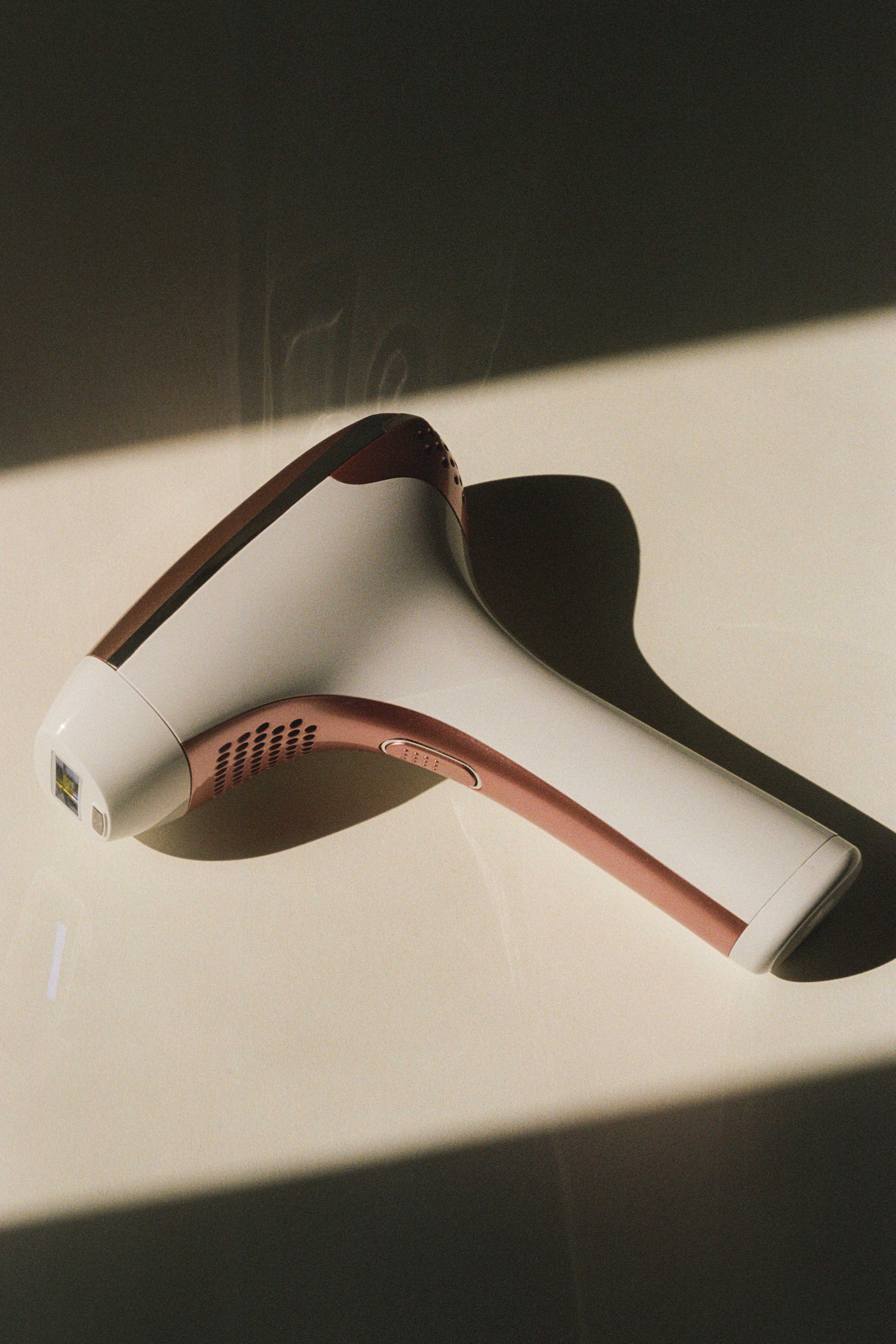
Get this: results from a clinical trial showed that hair grew more slowly after three weeks of using this device and that there was a 94 percent reduction in hair after a nine-week course. It has an LED screen at the top so you can see the amount of flashes you have left. The device has 300,000 flashes for between seven and nine full-body uses. It has five energy levels and is cleared for use on most body areas, including the underarms, bikini line, back, and arms. However, it is not suitable for use on the face. The over 400 glowing five-star reviews on Amazon's site show how this device works fast.
FDA-Cleared: Yes
Laser Type: IPL
Number of Flashes: 300,000
What We Love: Comes with protective glasses; has an LED screen for precise use
What We Don't: Large size; not recommended for use on the face; not suitable for dark and deep skin tones
Customer Review: "Have been using this device for about six months now. Over 4,000 flashes used. The device powers on consistently work while treating areas, and has adjustable intensity settings. Most importantly, THIS REALLY WORKS. I used to treat my lower back for swimsuit season, but after just a few treatments, I noticed a significant thinning in the hair that grew back. After a couple of months only light peach fuzz is growing where coarse black hair grew before. The product works and it works well. Excellent value for the money compared to similar devices." — Amazon
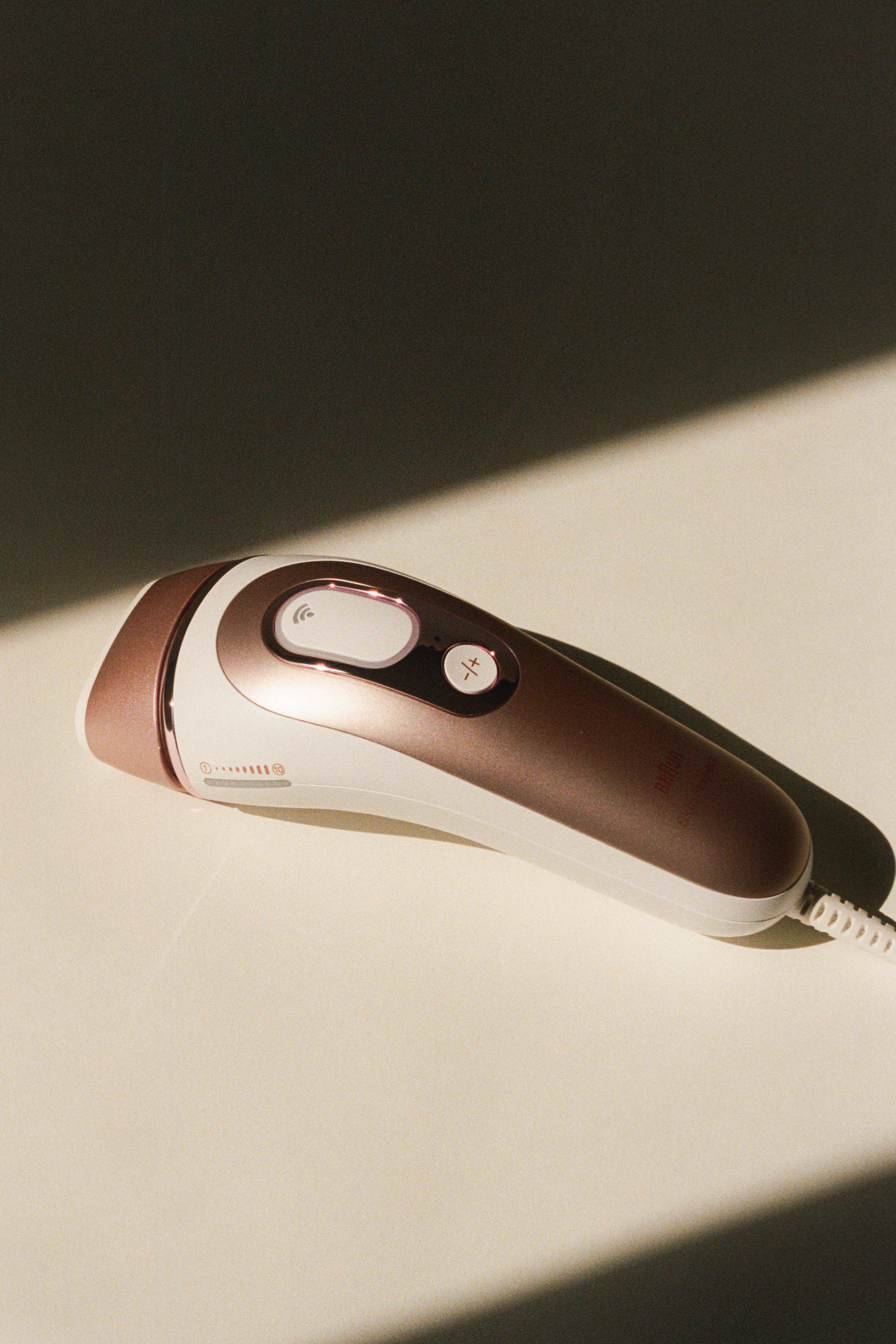
This device from Braun is beauty tech at it's finest. The three interchangeable heads connect to an app on your phone and create a personalized hair removal plan for you. It tracks your progress in each area of your body and provides real-time guidance so you don’t miss a spot. It also comes equipped with three levels of light sensitivity. Choose a lower level, and you’ll have a more comfortable experience that will take longer, while a higher level will be more intense and offer quicker results. In each case, the Braun Skin-i Smart IPL uses SensoAdapt technology that adapts to your skin tone.
FDA-Cleared: Yes
Laser Type: IPL
Number of Flashes: 400,000
What We Love: It is top-rated, has SensoAdapt technology that adapts to your skin tone, has three light sensitivity levels; is suitable for use in the pubic area; works in 10 minutes; is suitable for use on the face; comes with three interchangeable heads.
What We Don't: Some users find the app hard to use; not suitable for dark and deep skin tones
Customer Review: “I have been using the IPL for about eight weeks. I’m honestly stunned with the results. I use the product for my lip/jaw/chin and have had persistent dark hair growth on and off for years. It was resolved by laser years ago but reoccurred. This has worked so well in just 8 weeks and for a fraction of the cost. I have medium/fair caucasian skin and dark brown and thick hair.” — Braun
Other At-Home Laser Hair Removal Devices We Love
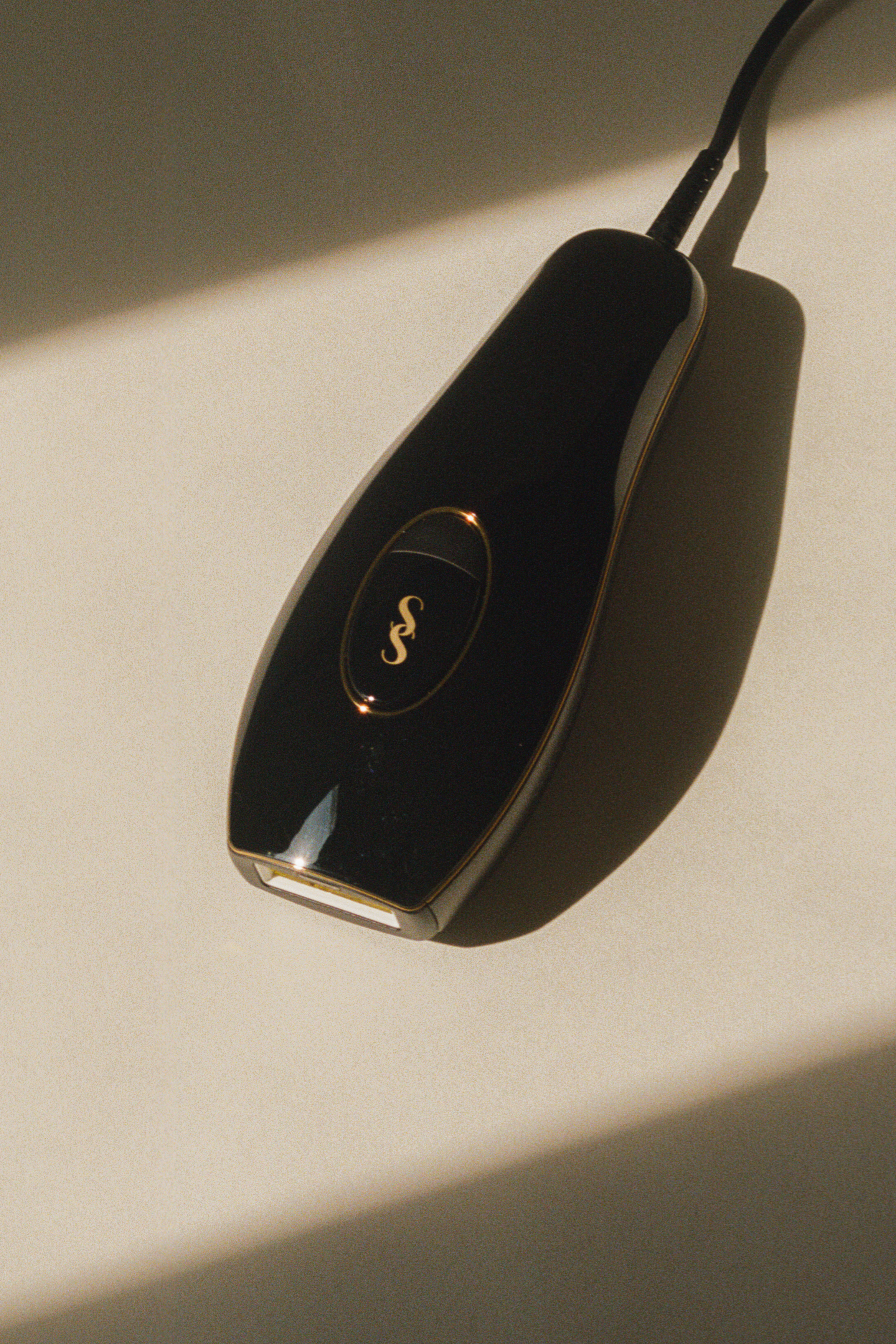
If you're hoping to target larger areas like the legs or back, this sleek unit is for you since it has unlimited flashes. The downside? Hair grows back quicker, so you must be more diligent with touch-ups. It's also, unfortunately, not safe for dark skin tones. That said, if your skin tone is on the lighter side, it's easy to use—it promises to remove hair on your entire body in 10 minutes—and fast-acting. The brand recommends using it once a week for 12 weeks before moving to just once a month from there on out.
FDA-Cleared: Yes
Laser Type: IPL
Number of Flashes: Unlimited
What We Love: Covers a large amount of space each time; has unlimited flashes per use; works quickly.
What We Don't: Reviewers found that hair grows back quickly after each use; not suitable for dark skin tones.
Customer Review: "Been using the device for about three mounths and noticeably less dark hair showing back up! The device has been easy to use for the most part, having some trouble around rounder/angular parts to get it flat enough to trigger even with the guide provided. It definitely picks up shades of your skin tone and adjusts the strength of the pulse to that so some lighter hairs on darker parts are not being treated. Overall very excited about the results!" — Currentbody
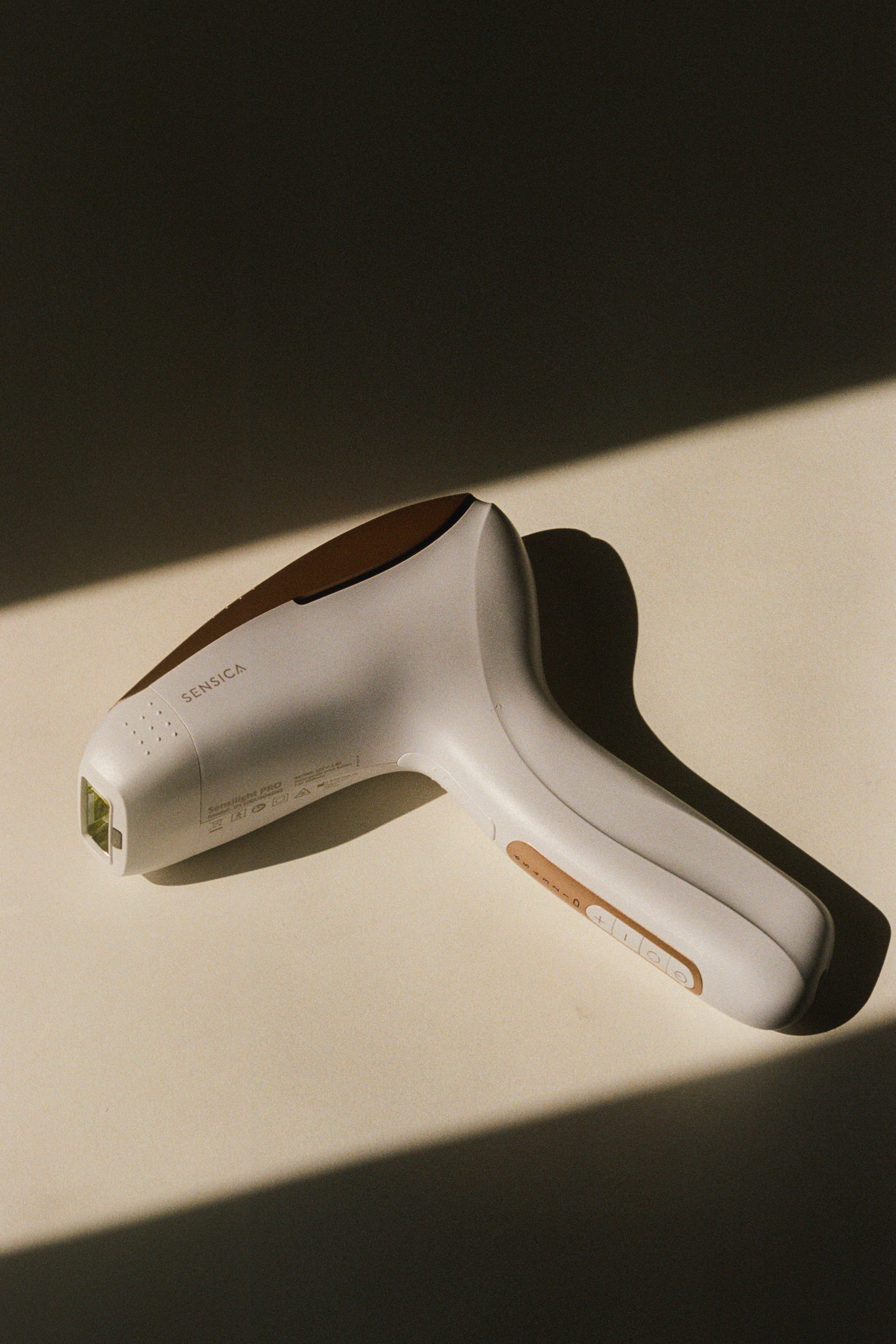
Boston-based triple-board-certified dermatopathologist Gretchen W. Frieling, M.D. recommends this device from Sensica. “It has an automatic and manual mode for on-the-go hair removal. It comes with two different heads for large and small areas. The charge will last for approximately 600 flashes.” Plus, it comes equipped with a skin sensitivity meter to protect your skin as you go and an energy recommendation button that, as you use it, gives you the best energy level based on your skin type.
FDA-Cleared: Yes
Laser Type: IPL
Number of Flashes: Unlimited
What We Love: Dermatologist-recommended; good for use on the face, has two light windows—one for use on the body and another, smaller one for the face; has a cordless design
What We Don't: Some reviewers felt it took longer to work than expected; not suitable for dark and deep skin tones
Customer Review: "It’s everything I ever wanted, cordless and unlimited flashes for such a low price!!! Have tried first treatment. Will keep using to check effectivity." — Currentbody
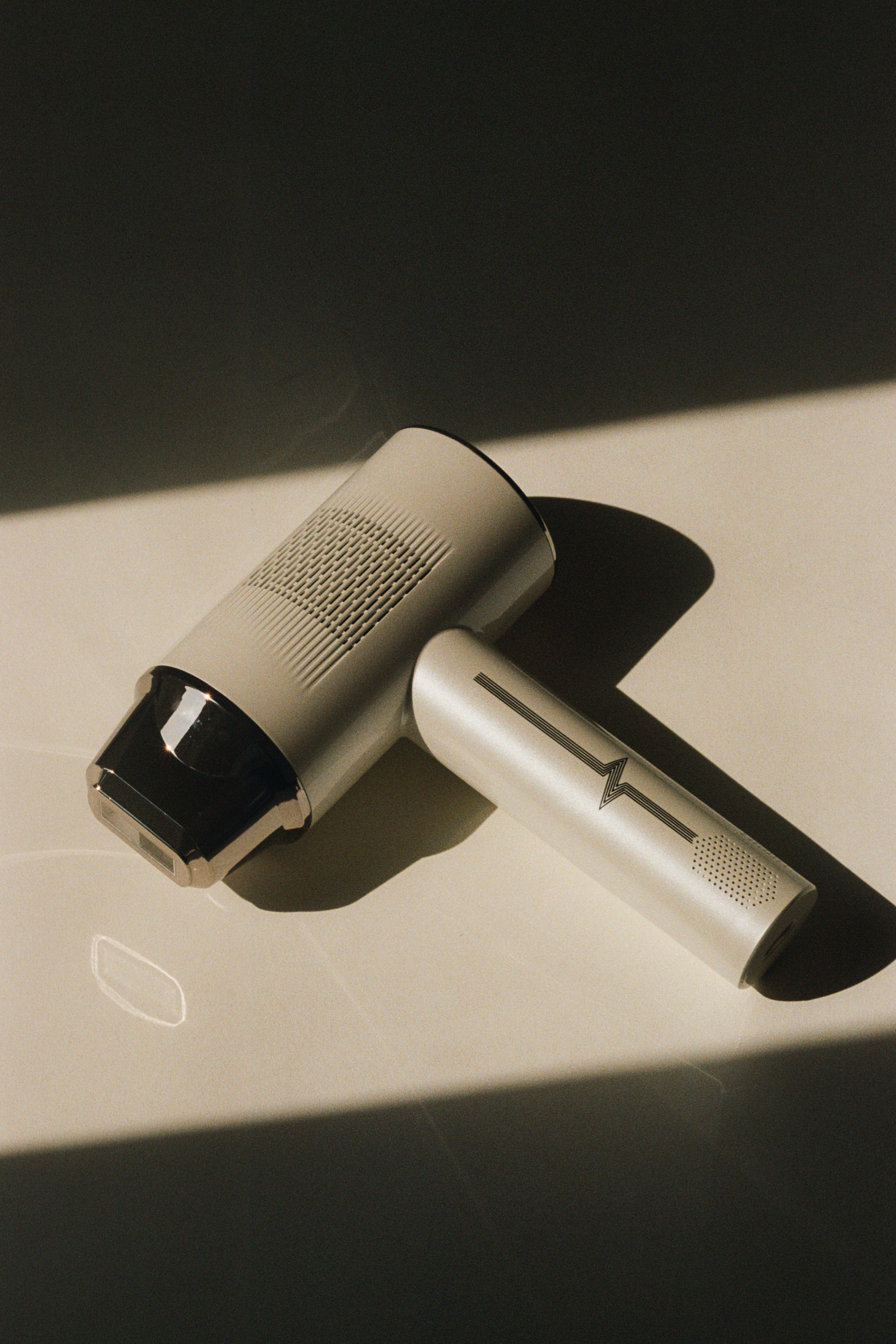
Currentbody’s Laser Hair Removal Device is larger than others on this list, but that’s for good reason. The wider treatment window means treating your entire body in less than 15 minutes. It has six power settings to find the best levels for each body part. My favorite part: It's outfitted with cooling technology for a less painful experience. The brand says you’ll see an 82 percent reduction in eight weeks.
FDA-Cleared: Yes
Laser Type: Diode Laser
Number of Flashes: Infinite
What We Love: Has cooling technology; works in under two minutes; has six power settings.
What We Don't: Not suitable for deep and dark skin tones; not suitable for light blonde or red hair.
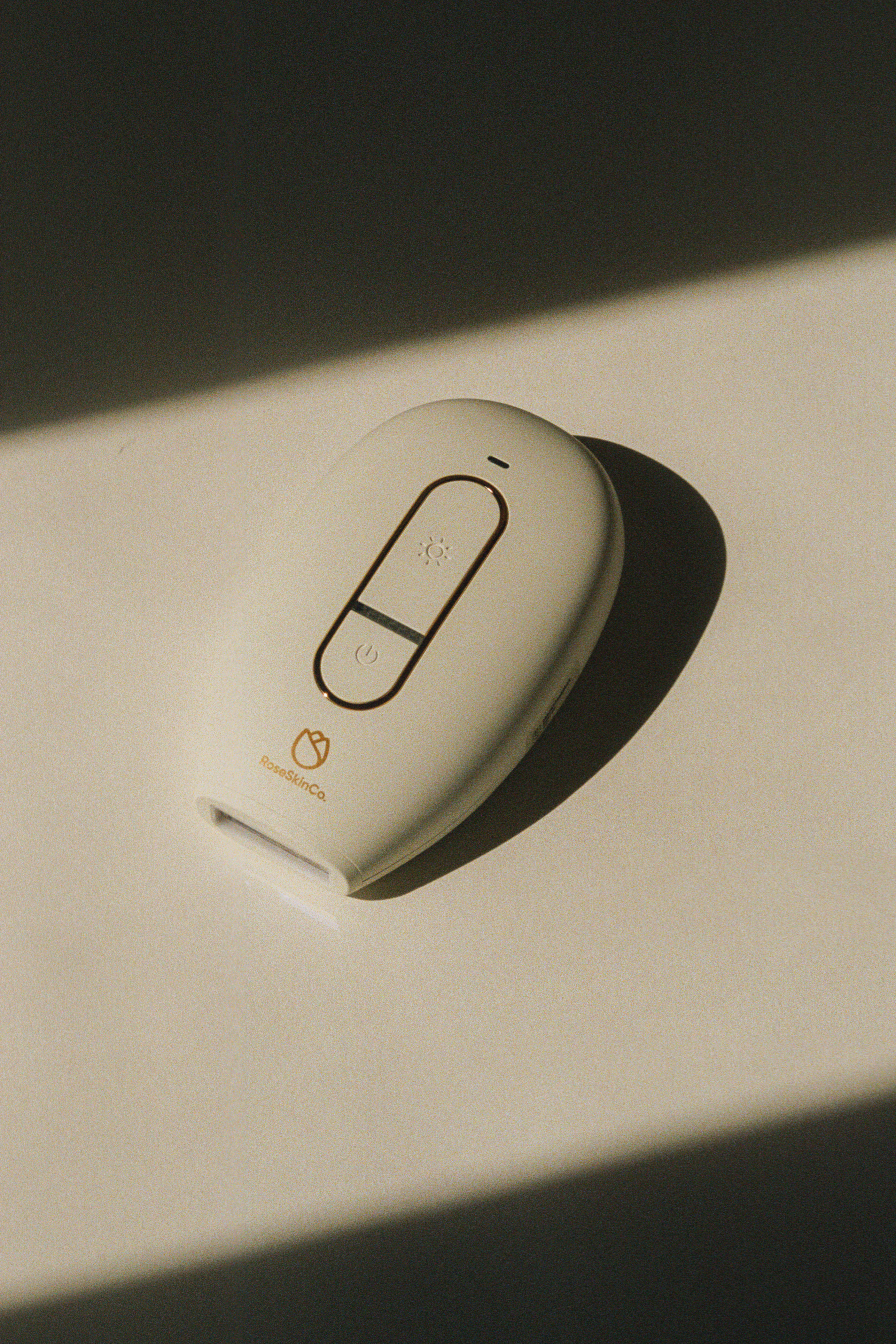
This adorable little device from Rose Skin Co. is FDA-cleared and promises noticeable results in three weeks of consistent use, with full results in six to 12 weeks, although you’ll see a decrease in hair growth in just one use. It has six power levels, and you can complete a full-body treatment in 30 minutes. It’s made to be used all over the body (including your bikini line and face) and comes in white and pink colors.
FDA-Cleared: Yes
Laser Type: IPL
Number of Flashes: 900,000
What We Love: Has six power settings; Promises results in 6-12 weeks; Can be used on the face; can be used on the bikini line; a whole treatment can be done in 30 minutes.
What We Don't: Not suitable for dark and deep skin tones; not suitable for light blonde or red hair.
Customer Review: “I used to have to shave EVERYDAY because of how fast my hair grows, but after just my first 2 sessions, I started noticing my hair was growing slower and I could wait longer to shave. It takes consistent use, but it DOES WORK, and I am so SO HAPPY with my results! I still have a few more sessions to go, but I'm already practically hair free, and I feel so much more comfortable in my skin! “ — Rose Skin Co.
How I Chose the Best At-Home Laser Hair Removal Devices
When choosing an at-home laser hair removal device, remember a few key aspects: price point, the number of flashes each device uses, whether a device has FDA clearance, and whether or not it will work for your skin type or tone. The Marie Claire team evaluated the above products across each criterion.
I also talked with experts, including Joshua Zeicher, M.D., the Director of Cosmetic and Clinical Research at Mount Sinai Hospital's Department of Dermatology; Howard Sobel, M.D., NYC dermatologist and founder of Sobel Skin; Rosemarie Ingleton, M.D., dermatologist and medical director of Ingleton Dermatology; Rachel Nazarian, M.D F.A.A.D., a dermatologist at the Schweiger Dermatology Group in New York City; Gretchen W. Frieling M.D., a Boston-based triple-board-certified dermatopathologist; and Anahita Mansouri M.D., a cosmetic doctor in the UK.
What to Look For in an At-Home Laser Hair Removal Device
- Skin Type and Skin Tone: Because laser hair removal devices work by identifying each hair’s pigment in relation to your skin, the process doesn't work for everyone. Many of the devices below are marked as not suitable for those with deep or dark skin and darkly colored hair, as well as those with fair skin and gray, very blonde, silver, or red hair. Dr. Zeichner says that while the “best hair and skin combination for laser hair removal, in general, is dark hair and light skin,” there have been advancements that allow them to work on a wider range of tones. “Unfortunately, no matter what device you use we cannot use lasers to get rid of light blonde or white hair because the lasers need the pigment in the hair itself to act as a target,” Dr. Zeichner adds.
- Number of Flashes: The number of flashes (which are sometimes called "pulses") a device emits indicates the lifespan of your device. Different body areas require a different number of pulses to be effective (a larger area will require more pulses). The goal is to have one device with a long enough lifespan to cover all your needs. Many of the devices on this list have a limit of several hundred thousand pulses, while others have an unlimited number.
- Price: The items on this list are investments for a reason. If you’re not willing to invest in an at-home device, I recommend speaking to your dermatologist directly or visiting a doctor’s office to find the best laser hair removal solution for you.
- FDA Clearance: All of the devices on our list have been cleared by the FDA.
Does Laser Hair Removal Work?
The short answer is yes, laser hair removal does work. However, it comes with a few caveats. "It really should be called laser hair reduction," notes Dr. Zeichner. "In some cases, it may be difficult to eradicate hair." That said, you will notice slower growth, thinner hair strands, and a less stubbly feel.
Is At-Home Laser Hair Removal Safe for All Skin Tones?
After chatting with our trusted experts, our editors have determined that at-home laser hair removal devices are unsafe for all skin tones, and no device on this list can be used on deep skin tones.
Let’s break it down: Because laser hair removal devices identify differences in melanin levels between the hair follicles and surrounding skin, they don’t work as well on users with similar hair and skin tone colors. This includes shoppers with fair skin and blonde, gray, or red hair and shoppers with darker skin tones and darker hair. If you fall into those categories, we recommend visiting a professional’s office for laser hair removal.
Your safety is our number one priority. We’ve broken down which skin tones and hair colors are approved for use on each device. And because not every device is made to be used on every part of the body where hair grows (like on your face or legs), we’ve also noted which devices are best for each area.
How Does Laser Hair Removal Work?
At-home laser hair devices remove your hair by targeting melanin in the skin, so they tend to work best on those with a higher contrast between their hair and skin tones. Once the melanin is identified, it emits light energy that gets converted to heat energy, and kills the hair at the follicle beneath the skin.
Think of it this way: waxing removes the entire hair follicle by pulling it out, while laser hair devices zap it away at the source, leading to longer-lasting (and sometimes permanent) removal in the area. "At-home devices work similarly to professional treatments but use lower energy levels," says Dr. Zeichner.
"The lasers definitely decrease the density of hair and the thickness of each individual hair," he continues, also noting that "it takes multiple treatments to give the results most people are looking for." As with most pricey beauty treatments, it's best to stay patient when waiting for your results.
What Are The Different Types of Lasers Used?
There are several common types of laser hair removal devices. Here’s a helpful guide to some of the options you’ll see most often on this list. “One is not necessarily better than another, and it really just depends on what type of technology a company chooses to use,” Dr. Zeichner says. Ahead, I've broken down the most common types of lasers used to remove hair.
- IPL: “IPL stands for intense pulsed light,” says Dr. Zeichner. IPL devices emit pulses of broad-spectrum light into the skin, generating heat to destroy the hair follicle. Because IPL devices cover larger surface areas, they tend to work more quickly than single-laser tools.
- Diode: Diodes use a single wavelength of light to be absorbed by the melanin around the hair follicle. They’re great because they can often be used on broader skin tones. Diodes are also known to cool the skin as they work. They also penetrate the skin to deeper levels than other types of lasers.
- Optimal Pulsed Technology: Optimal Pulsed Technology, or OPT for short, is an advanced IPL laser technology that releases higher-intensity light to target the specified area and speed up the hair removal process.
How Long Does Laser Hair Removal Last?
It varies. Some devices promise weeks or even months of a hair-free look. However, it's important to stay consistent. "Each treatment will partially destroy the follicle, so repeated treatments are often needed for the full effects," he explains. "The difference between at-home and professional strength treatments is the energy level of the laser. At-home devices have much lower energy levels to ensure they are safe to use at home. As a result, these treatments are slower to work and require more sessions to give noticeable improvements."
How To Prepare for At-Home Laser Hair Removal
- Shave in Advance: Dr. Frieling recommends shaving a day before you plan to use your laser hair removal device.
- Avoid Tanning Products: Don't use self-tanning products for at least two weeks before you start.
- Avoid Products That Will Irritate the Skin: Dr. Frieling recommends "avoiding potentially irritating products such as retinoids, retinal, or retinoic acids" prior to treatment, as well as “brightening ingredients and acidic cleansers."
- Be Careful Where You Use Your Device: While you technically can perform laser hair removal anywhere on the body, you must choose a device that’s approved for the specific areas you’re looking to treat. Some devices on this list can be used on the face or in the bikini line, while others are not. “It’s important to be cautious in lasering sensitive areas like the genitals, which commonly have more pigment than other areas of the body,” says Dr. Zeichner.
- Avoid Damaged, Burnt, or Cracked Skin: If you have irritation or cuts anywhere on your body, avoid performing laser hair removal in that area. “I do not recommend using a hair removal device on parts of the body where the skin is irritated or broken,” says Dr. Zeichner. “Lasering open or raw skin can lead to significant inflammation and possibly put the skin at risk for an infection if the laser device itself is contaminated.”
What Should You Do After At-Home Laser Hair Removal?
- Don't Sweat if Possible: Dr. Mansouri recommends avoiding exercising (or sweating, for that matter) for up to two days because the heat can cause "irritation on freshly treated skin after a session is completed."
- Avoid the Sun: Stay out of the sun for up to two weeks.
- Be Comfortable: Wear loose-fitting clothes after you finish to keep skin cool.
- Calm the Skin: To allow your skin to heal correctly, Dr. Mansouri says to "avoid topicals, including makeup, except for aloe vera gel or calming and soothing creams. "
- Moisturize: “After laser hair removal, it is important to apply moisturizer to the skin to hydrate and repair the skin barrier,” says Dr. Zeichner, who recommends Eucerin’s Original Healing Rich Lotion. “If any areas of the skin are particularly dry, or irritated, opt for an ointment to form a protective seal over the skin,” he continues, siting Vaseline’s petroleum jelly as a good option.
Meet the Experts
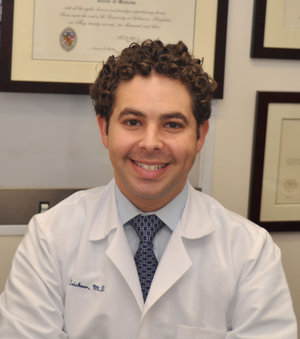
As the Director of Cosmetic and Clinical Research at Mount Sinai Hospital's Department of Dermatology, Dr. Zeichner has a broad interest in medical and cosmetic dermatology as well as clinical research. His specialty is the treatment of acne, as well as the cosmetic rejuvenation of the aging face. Dr. Zeichner treats general skin conditions, including eczema, rosacea, psoriasis, and skin cancer. In addition, he is well-versed in the use of Botox and dermal fillers, as well as lasers and chemical peels.

Dr. Howard Sobel, MD, operates Sobel Skin, a private practice for dermatology, cosmetic surgery, and aesthetic medicine in the Upper East Side of Manhattan in New York City. Sobel Skin was a part of the early stages of the medspa / medi-spa evolution in the United States. Dr. Sobel has been a pioneer of the union between dermatology & cosmetic surgery. Over the years, Dr. Sobel has not only been known for his expertise in all aesthetic treatments, but as one of the best botox and fillers doctors in New York City. His ability to provide an exceptional outcome never fails, and patients are not only thrilled with their results, but also feel younger and rejuvenated after treatment. Dr. Sobel combines modern technology with over thirty years of experience. His unique practice provides the latest advances in dermatology, dermatologic cosmetic surgery and progressive face and body treatments all in one luxurious Park Avenue facility. Dr. Sobel’s focus within dermatology is to further the total well-being and health of his patients and those who use the products he formulated and created.

Dr. Ingleton is currently an Assistant Clinical Professor of Dermatology at Mount Sinai Hospital. She received a BA in Psychobiology from New York University and her medical degree from the University of Maryland. She completed her Internal Medicine residency at Beth Israel Medical Center in New York and her Dermatology residency at New York Medical College in Valhalla, New York. She is a fellow of the American Academy of Dermatology and a member of the American Society of Dermatologic Surgeons, the Dermatology Society of New York and the National Medical Association.
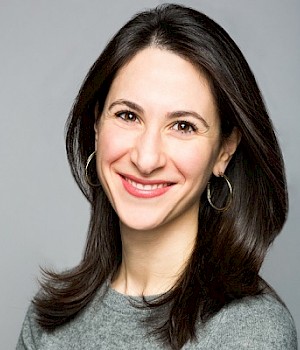
Dr. Rachel Nazarian joins Schweiger Dermatology after years of practicing various aspects of dermatology, including cosmetic treatments, skin cancer, general dermatology and dermatologic surgery.Dr. Nazarian has written many published articles in medical journals as well as widely respected dermatology textbooks, such as Treatment of Skin Disease.Dr. Nazarian serves as a faculty member at Mount Sinai Medical Center’s Department of Dermatology, where she completed her dermatology residency. While completing her medical degree at Tulane University School of Medicine, Dr. Nazarian was awarded a grant from the Women’s Dermatology Society. Dr. Nazarian is a board-certified dermatologist and Fellow of the American Academy of Dermatology.

Dr. Frieling. “Dr. G,” is a medical doctor with over 13 years of experience as a leader in the Aesthetic, Dermatology and Pathology fields. Her background is notable for intensive training in ballet, which includes attending the Juilliard School in New York City. She combines her artistic eye, perfectionistic qualities, and medical expertise, to give her patients impeccable results. When it comes to cosmetic procedures, specifically injectables, Dr. G has mastered the art of re-vitalizing the face by softening fine lines and wrinkles, re-establishing volume, and optimizing overall appearance and beauty. She will listen to your requests and concerns. Dr. G will explain the available procedures that would be optimal for your unique situation. She also performs select body procedures, including fat dissolving, buttock lifting/gentle reshaping, and skin tightening.

Dr. Ana is a UK-qualified Aesthetic Doctor with a wide range of medical & surgical training experience as well as a background in GP training. She graduated with a Bachelor of Medicine & Bachelor of Surgery from Newcastle University in 2014 and has since then completed a Postgraduate Diploma in Clinical Dermatology from Barts and The London School of Medicine and Dentistry. Dr Ana is passionate about all things Aesthetic Medicine & Cosmetic Dermatology.
Stay In The Know
Get exclusive access to fashion and beauty trends, hot-off-the-press celebrity news, and more.

Julia Marzovilla is the Fashion E-Commerce Editor at Marie Claire, where she reviews the latest launches from fashion and beauty brands, finds the best on-sale items around the internet, and interviews experts to find the best products in any category to share with her readers. She also creates shopping guides that span every vertical on the site as an expert in everything from the best laptop bags to the best laser hair removal devices.
In her near decade of experience, Julia has both written for several top outlets in the E-Commerce space and worked at major fashion labels. Prior to joining the Marie Claire team, she contributed similar shopping stories to sites such as Bustle, InStyle, The Zoe Report, Who What Wear, and worked as the Trending Fashion and News Writer STYLECASTER. You can find her across the internet at @JuliaMarzovilla. In real life, you can find her creating shopping guides for her friends, cooking or baking in her too-small kitchen, or buying tickets for the next time Harry Styles is in town.
Julia has a Bachelor’s degree in English with a minor in Journalism from Loyola Marymount University in Los Angeles, California. She lives in New York City, her hometown.
-
 Prince William and Princess Kate Could Take Legal Action Over These Spring Break Photos
Prince William and Princess Kate Could Take Legal Action Over These Spring Break PhotosPaparazzi snapped pictures of the family during their secret French getaway.
By Kristin Contino
-
 Blake Lively Channels Taylor Swift in a Bejeweled Canadian Tux
Blake Lively Channels Taylor Swift in a Bejeweled Canadian TuxThese two could be twins.
By Kelsey Stiegman
-
 Prince George Looks Just Like a Young Prince William During Fun Night Out with His Dad and Billionaire Godfather
Prince George Looks Just Like a Young Prince William During Fun Night Out with His Dad and Billionaire GodfatherThe 11-year-old joined his father and the Duke of Westminster for an exciting football match in Birmingham.
By Kristin Contino
-
 Finally, the Humble Shower Beer Gets a Well-Deserved Rebrand
Finally, the Humble Shower Beer Gets a Well-Deserved RebrandNow *this* is self-care.
By Hannah Baxter
-
 Everything You Need to Know About Marie Claire’s Skin and Hair Awards
Everything You Need to Know About Marie Claire’s Skin and Hair AwardsCould your brand survive an editor testing session?
By Ariel Baker
-
 People Always Compliment My Flawless Skin—These 6 Steps Are Why
People Always Compliment My Flawless Skin—These 6 Steps Are WhyFrom sunscreen and essences to moisturizers, it's all here.
By Hannah Baxter
-
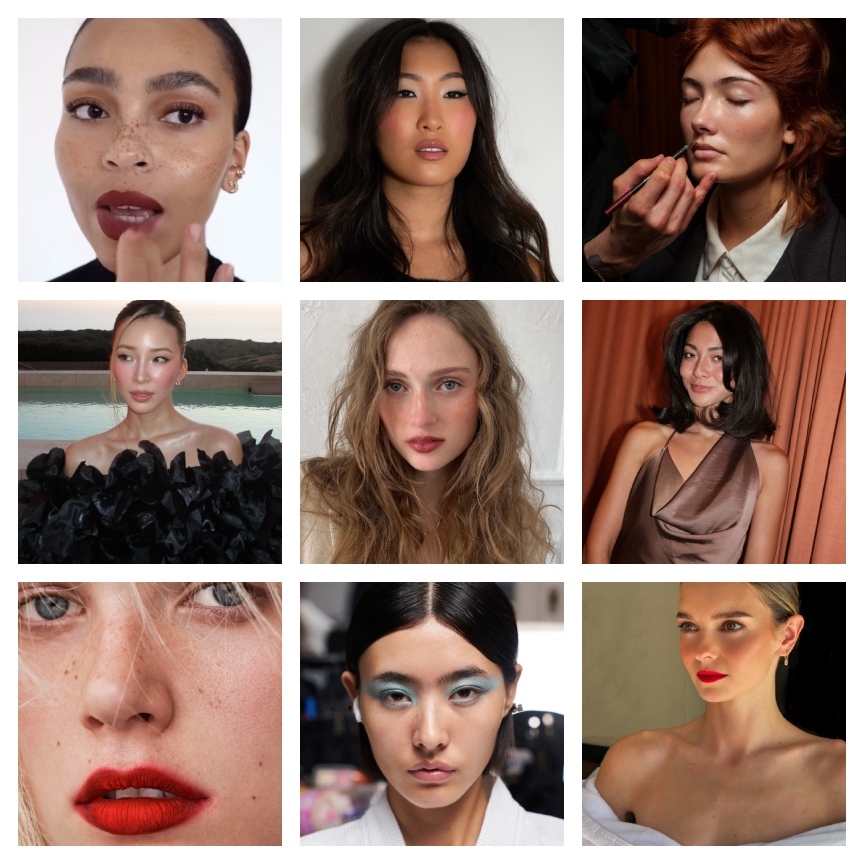 The 11 Best Spring Makeup Trends Are Sexy, Sensual, and Perfectly Luminous
The 11 Best Spring Makeup Trends Are Sexy, Sensual, and Perfectly LuminousIt's dew or die time.
By Jamie Wilson
-
 Simone Ashley’s Indie Sleaze Glam Is a Cool-Toned Dream
Simone Ashley’s Indie Sleaze Glam Is a Cool-Toned DreamThe actor was spotted in New York City looking like the epitome of cool-toned beauty.
By Ariel Baker
-
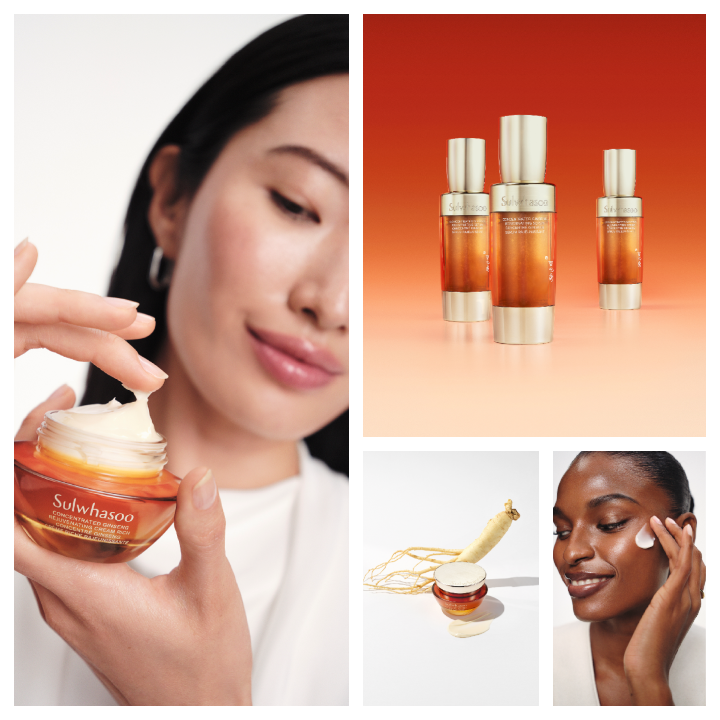 Sulwhasoo’s New Concentrated Ginseng Cream Is a Wrinkle-Erasing Time Machine for My Skin
Sulwhasoo’s New Concentrated Ginseng Cream Is a Wrinkle-Erasing Time Machine for My SkinThis Seoul-based brand is the key to plump skin.
By Samantha Holender
-
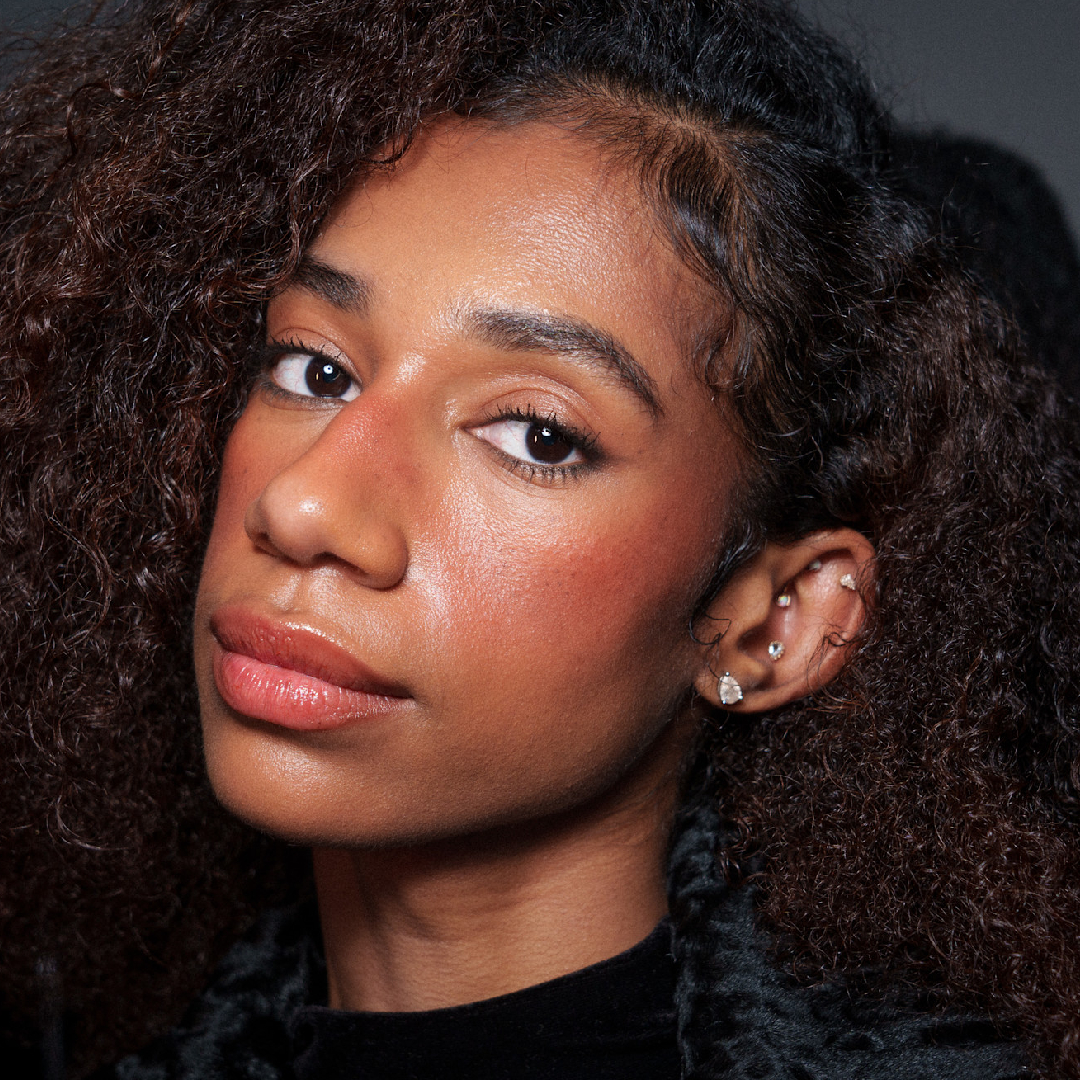 The 10 Best Hair Growth Shampoos of 2025, Tested by Editors
The 10 Best Hair Growth Shampoos of 2025, Tested by EditorsExpensive and healthy-looking hair on lock.
By Marisa Petrarca
-
 New York Fashion Week’s Fall/Winter 2025 Best Beauty Moments Are a Lesson in Juxtaposition
New York Fashion Week’s Fall/Winter 2025 Best Beauty Moments Are a Lesson in JuxtapositionThe week's best beauty looks were a maximalism master class.
By Ariel Baker